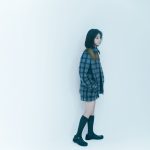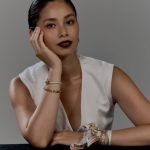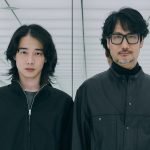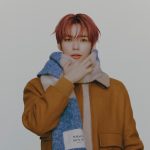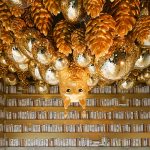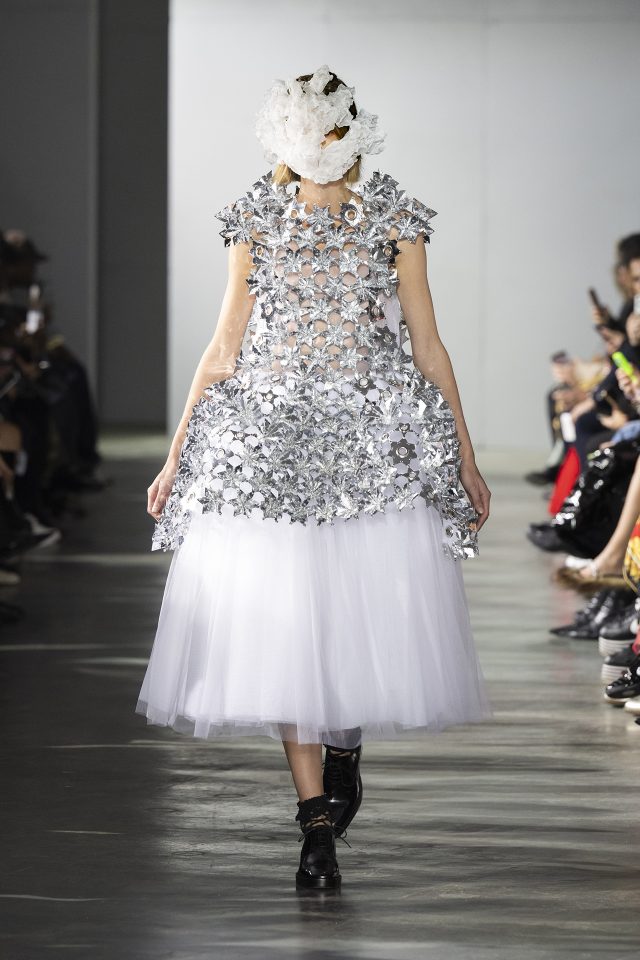【インタビュー】honeyee.com / .fatale 編集長 鈴木哲也氏 - ハニカムのこれまでと今後
News
【インタビュー】honeyee.com / .fatale 編集長 鈴木哲也氏 - ハニカムのこれまでと今後
Interview with Tetsuya Suzuki on the future of honeyee.com & .fatale
東京のストリートファッションシーンのキーマンであるWEBマガジン『honeyee.com』『.fatale』の編集長・鈴木哲也。先日、経営体制の変更を発表し、新たな展開を迎えるというこれからのハニカムについて話を聞いた。
*You’ll find the English text after the Japanese.
東京のストリートファッションシーンのキーマンであるWEBマガジン『honeyee.com』『.fatale』の編集長・鈴木哲也。先日、経営体制の変更を発表し、新たな展開を迎えるというこれからのハニカムについて話を聞いた。
—WEBマガジン『honeyee.com』はすでに8年目となり、2011年に立ち上げた女性向けWEBマガジン『.fatale』は2年が経ちました。
『honeyee.com』でのモデルを軸に、新たにウィメンズファッションの WEB マガジンとして『.fatale』を立ち上げ、2012年には広告収入のみで黒字化を果たしています。その時点で、ハニカムという会社のひとつのビジネスモデルを完成させたという感がありました。そして、これはもう発表されたことなのですが、2013年の9月をもって宮崎を本拠地とする株式会社アラタナに株式の譲渡を行いました。より多角的な事業展開を目指すためのM&Aです。ハニカムは非常に順調な黒字経営ではあったものの、2005年の設立当時から、「この“会社”を将来どうする?」という問題があって、そのハッキリとした答えが見つからないまま、いわば、先送りにしてきたわけです。しかし、同時にそれは、「これまでのハニカムの活動は成功といえるのか、そうではないのか」という問題の先送りでもあったわけです。少なくとも藤原ヒロシ、清永浩文、中村ヒロキをはじめとする何人かの株主たちから会社を預かる僕からすると、そこはハッキリさせたいところでもあった。いい加減、「ハニカムは上手くいきました!」と皆に報告したい、と (笑)。そこに、株式会社アラタナの濱渦伸次代表が現れ、ハニカムの現状のプレゼンスと今後の可能性を高く評価してくださり、今回の株式譲渡〜M&Aという結果になったわけです。まさに第一章の終了です。一応、ハッピーエンドでしょう (笑)。
そして、第二章のスタート。もっとも、新しい局面を迎えつつあるのはハニカムだけではない。以前こちらのサイトでインタビューを受けた時からすると、WEB メディアや東京のファッションシーンを取り巻く状況も大きな変化を迎えていると思います。前回はメンズが面白いといっていたけれど、いまは一段落してしまい、むしろウィメンズのほうが可能性を感じます。乱暴に言ってしまえば、東京のインディペンデントなウィメンズブランドが“裏原化”する気配がある。
これまで東京のウィメンズのデザイナーは、どうしても職人思考になってしまうというか、美しい服をつくることを目指すけれど、自らを信頼できる“ブランド”とすることへの意識が弱かった。それに対して、エイプをはじめ海外でも成功した東京のストリートブランドは、まずブランディングからスタートしていったわけです。例えば visvim は当初から“良いモノをつくる”ということ、それ自体をブランディングのひとつとして捉えていました。もちろん、いいモノをつくることは大前提ですし、日本のブランドのクオリティは皆同様に高い。けれど、それを究極に推し進め、もはや合理性を無視するようなレベルであってもハンドメイドへこだわる“打ち出し”が“ブランド”をつくり、その徹底したコンセプトとプロダクションに世界中の人が驚いたわけでした。ただ普通に“良いモノ”をつくっていても、つくっただけで終わってしまう。その“良いモノ”へのこだわりが世界観の域にまで徹底されていないとブランド足り得ない。ましてや、卸だけやっていて店舗を持たないようでは、到底“世界観を売る”には至らない。世界観こそが“ブランド”です。いいモノをつくるだけではなくコンセプトを伝えていくべきで、逆にいえばコムデギャルソンこそは、そこに特化してきたともいえますね。“アヴァンギャルド”をブランドにしたわけですから。
—『honeyee.com』は藤原ヒロシ氏、SOPH. の清永浩文氏、visvim の中村ヒロキ氏と鈴木編集長の4名で立ち上げたメディアですよね。当初は裏原ブランドやナイキなどストリートブランドが多数でした。現在はエルメスやグッチ、また『.fatale』ではシャネルやカルティエ、サンローランなどラグジュアリーブランドの特集もしています。一方でアンダーカバーや sacai、HYKE のようなインディペンデントな東京のブランドも並列に取り上げていますよね。
その点は、非常に意識的にやっています。特に『.fatale』では、この秋冬、国内のブランドをそれこそ“ブランド”として見せたいと考えて、ファッションシュートにインタビューを附随するといった特集も多数組みました。例えば、アンダーカバーがコレクションで発表した野心的なピースは、ブランドのあり方を非常に体現しているのですが、ユニークピースのためにメディアでの掲載はなかなか難しい。実際、買える機会が少ないわけですから。けれど、そこをあえて特集するのが『.fatale』の使命だと感じています。また、mame という若手の国内ブランドをサン ローランなどと並列に特集することも同じです。『.fatale』の読者へ向けて、ラグジュアリーブランドも日本のブランドもどちらも好きになって欲しい、どちらも“理解”してほしいというメッセージを込めています。
僕自身、visvim や KITSUNE など、服はもちろんデザイナー自身の人柄に魅かれたことで、そのブランドをより一層理解して意識的に『honeyee.com』で取り上げてきた部分もあるのです。そしてお客さんとして彼らの服を買って着てきた。流行ってから着るのではなく、誰よりも先に自分が見つけて、そのブランドが成長していく過程を追うというのも楽しいものですよ (笑)。今、何を着るのか。アンダーカバーなのか、sacai なのか mame なのか。時代の空気感を繊細に理解して、デザイナーと共有するということは、やはり国内のブランドの方が細やかにできるでしょう。
—つまり、東京のファッションシーンを軸としたコミュニティをつくろうとしているわけですよね。何を着ているか、今シーズンは何を買ったのか。以前はエディターズバッグなど、画一的なトレンドをメディアが煽り、ブームをつくっていましたが、いまは自分がいる場所や周りの友人が評価基準になっていますよね。コミュニティ感を作ったメディアといえば、今なお若いフォトグラファーやデザイナーからもよく名前があがる『purple』なのかなと。
『purple』はパリのファッション寄りのアーティストたちのコミュニティをつくっていましたよね。 日本でも“ファッションは文化”などと口では皆いうけれど、実際は生活必需品の一部としてしか見ていない人が多い。服は無くては困る日用品でもあるけれど、とはいえ、トイレットペーパーや洗剤とは違う。少なくともファッションは生活必需品ではない。だからこそ、皆、夢中になる。音楽や映画、文学などと一緒です。トイレットペーパーに夢中になる人はいないでしょう。確かに無いと困るけれど(笑)。ファッションにこだわるというのは自分のライフスタイルにこだわるということです。自分の人生のクオリティを自分でコントロールしようという意志の表れです。
一方、自分はお金があるし、お金持ちに見られたいからラグジュアリーなものを着るというのでは、人生のクオリティを自らコントロールするという意味では、やや精度が低い。それでは世の中にコントロールされていることになるわけで、昨今のラグジュアリー離れは、カスタマーもそういう部分への意識の変化を感じ取っているからでしょう。だから、ただ単に“高価に見える服”から、“コンテンポラリー”と呼ばれる服を作るデザイナーたちに注目が集まっているのだと思うのです。コンテンポラリー、あるいは、もう少しトレンド寄りのテイストを指すアドバンスド・コンテンポラリーというカテゴリーは、コンセプトの上では1990年代にスタートした東京のストリートファッションが2000年頃には既に完成させていたと僕は考えています。
更にそれに先立つ形で実践していたのが A.P.C. ですね。コンテンポラリーとは、コンテンポラリー・ベーシックのことです。一般にストリートというと奇抜なスタイルをイメージする人も多いですが、90年代のストリートは非常にベーシックなスタイル、いってみればトラッドなスポーツスタイルをベースにグラフィックや独特なバランス感で個性を表現していた。その90年代的なストリートに、よりシックなドレスコード感を加え、ある種のメタファー、あるいはパラドクスとして“ブルジョア感覚”を楽しもうというのが、KITSUNE や BAND OF OUTSIDERS であり、彼らこそが、最新バージョンのストリートブランドなのだと僕は思います。こうした感覚がウィメンズのモードにも表れはじめている。実際、HYKE の前身である green という東京のブランドは、このコンテンポラリーな感覚を世界のどのデザイナーよりも早く、そして上手く表現していたのではないでしょうか。
—特集で扱うブランドだけでなく、ブロガーには LOUIS VUITTON JAPAN (ルイ・ヴィトン ジャパン) の PR や Sister (シスター) のバイヤーなど、多様な人が参加していますよね。『.fatale』はファッションメディアとしてどのような立ち位置を目指しているのでしょうか?
ある“シーン”をつくりたいとは考えています。そして、誤解されるのを承知で断言すれば“シーン”というのはマーケットのことでもあるわけです。当初、『honeyee.com』は裏原というシーンが先行してあって、そのシーンをフォローするメディアだった。その意味では、ウィメンズファッションの世界にメディアは数多くありますが、世界的な普遍性を持ったシーンを独自に作っているメディアはない。これを僕らがオーガナイズしたいのです。こうした考えはメンズの方法論であって、ウィメンズには通用しないなどといろいろな人に言われてきました。けれど、僕はそんなことはないと思っていますし、今、自分の手で実証しようと考えています。そのための『.fatale』です。ブロガーはある視点というか、僕たちと同じ方向を向いている人にお声がけして参加してもらっています。単なる友だちだからという理由ではありません。そういう意味で言えば、ある方向性やテイストを意識的に配しています。
THE CONTEMPORARY FIX (ザ・コンテンポラリー・フィックス) の吉井雄一さんとは、最初、彼が green (グリーン) を扱っていたことで興味を持ってコンタクトしました。今思えば、『honeyee.com』の雑誌版『honeyee.mag (ハニマグ)』で唯一特集したウィメンズが green でした。green はコンセプトをもって“ブランド”をつくるという姿勢が『honeyee.com』で扱ってきたブランドの方法論と一致しているように思えました。クリエイションに対する迫力はもちろん、ビジネスのあり方までシビアにやっていた姿に共感しました。「ほら見ろ、メンズもウィメンズも同じじゃないか」と僕に気づかせてくれたのが green だったんです。
—『honeyee.com』『.fatale』では鈴木親さん、新津保建秀さんをはじめフォトグラファーを贅沢に起用している印象があります。ファッションメディアとして、ヴィジュアルに関してどのようなこだわりを持っているのでしょうか?
ファッションにおいては、そのブランドやデザイナーを紹介するにあたり、評論めいたテキストよりもヴィジュアルで見せたほうが直感的に伝わるものが大きいという信念があります。僕自身は自分をファッションヴィジュアルのプロだとも思っていますし。2013SS に『.fatale』で Saint Laurent (サンローラン) の特集をした際、奥山由之くんという若手のフォトグラファーで撮影をしました。彼は非常に印象的な写真を撮るのですが、実はストレートなヴィジュアルを作るタイプです。レイヤーを重ね、ひねりを効かせているようで、実はシンプルな構図が生む強さが特徴であり、彼の良さなんですね。そのあたりが現在の Saint Laurent にも通じるのではないかと思い、奥山くんの一見テクニカルで、でもストレートな表現を当ててみた。結果的に、Saint Laurent のスタッフにもそのニュアンスが伝わり好評でした。
ブランドの世界観を単に伝えるだけでなく、独自の視点をもってヴィジュアルをつくることは、ある種の批評であるとも考えています。一部の読者からすれば、あえてカッコ悪い表現を選んでいるように見えるヴィジュアルもあるかもしれません。けれど、それは扱うテーマやブランドとモデルやロケーションとのギャップやコントラストが、何かを浮かび上がらせる時もあるということです。カッコイイだけのヴィジュアルは簡単につくれます。それをあえてギャップを作り、ある種の違和感を作ることで“批評”となるようなヴィジュアル。それが僕の目指すコンテンツのひとつです。
—種明かしをしてしまうようですが、『honeyee.com』『.fatale』はロケで撮影することも多いですよね。しかも、編集部の裏や近くのどうってことのない道で撮影する。もちろん、スタジオを用意してキメ込んで撮影することもありますが、その洋服を着ている日常のシーンを切り取るという点では、東京の道というのは非常にリアルだなと。
東京の街を撮ることで、そこにある雰囲気を撮りたい。服をフィルターにしてその場所や時代のムードを撮りたいんですよね。日本人のモデルを多く起用するのも同じ理由です。その面白さがクリティックでありジャーナリズムでもある。それは WEB であろうが紙であろうと関係ない。僕らが撮りたいのはリアルではなく、“リアリティ”というフィクションです。そして、このリアリティこそが現代における最も魅力的なファンタジーなんだと僕は確信しています。
ファッションの面白さは、やはり時代の無意識を先取って表現していることだと思います。それを敏感に感じとることで、未来予測的にこれから社会に何が起こるかが見えてくる。具体的な形をもつ前の雰囲気やムードを誰よりも早く捕まえるゲームなんです。だからこそ、流行があり、世の中の流れは少しずつ変化していく。その意味でも、ファッションはアートと同じなのです。先日『.fatale』で取材したアーティストの田中功起さんがテーマにしている「恊働」といったキーワードも、今はまだリアリティがないかもれませんが、10年後20年後には当たり前の価値観になっているかもしれない。村上隆さんのスーパーフラットという概念もそうでしたよね。現在のムードあるいは来るべき時代のニュアンスを服というフォーマットで具象化する。そして、さらに着る者がそこに自分の感覚を込めていく。それがファッションの面白さなのだと思います。
<プロフィール>
鈴木哲也(すずき・てつや)
アップリンク、宝島社を経て2005年ハニカム設立に参加。以来、WEB マガジン『honeyee.com(ハニカム)』の編集長としてファッション、ライフスタイル情報を中心としたコンテンツ作りを行う。また、2011年には女性向けファッションWEBマガジン『.fatale(ファタール)』をスタートさせる。
Keyman of the Tokyo street fashion scene and chief editor of WEB magazines “honeyee.com” and “.fatale”, Testuya Suzuki. We asked him today, about honeyee.com’s recently announced modification in management structure, and what they have in store for the future of honeyee.com.
—Your WEB magazine “honeyee.com” is already in its 8th year, and it has been 2 years since the establishment of your women’s WEB magazine “.fatale” in 2011.
We established our new women’s fashion WEB magazine “.fatale” centered around our “honeyee.com” model. We managed to turn the cash flow positive by 2012 just with advertising revenue. I believe we have succeeded in creating another business model for “honeyee.com”. This has already been announced, but as of September 2013, our shares have been transferred to Aratana Inc., based in Miyazaki prefecture. Ever since honeyee.com’s establishment in 2005, we were faced with the problem of what to do with the company in the future. Unable to decide on a concrete answer, we’ve postponed this problem up until now. However, this also meant the postponement of the question to whether our activities at honeyee.com can be considered successful or not. This was a question I wanted to straighten out at any rate, being entrusted the company by shareholders such as Hiroshi Fujiwara, Hirofumi Kiyonaga, and Hiroki Nakamura. I wanted to be able to report that “honeyee.com is a success!” Right at that time, Shinji Hamauzu of Aratana Inc. came into the picture, and highly valued the current presence of honeyee.com as well as its possibilities for the future, hence leading to our transfer of shares – M&A. This pretty much marks the end of our first chapter. I guess we can say it’s a happy ending.
And now the start of our second chapter. Actually, honeyee.com is not the only one in the midst of entering a new phase. In comparison to the last time I attended an interview on this sight, I think the situation surrounding WEB media and the Tokyo fashion scene has undergone a big change. In my last interview, I mentioned men’s clothing to be the hot topic, but now, the heat has cooled down and I think there is more possibility in women’s clothing. To be frank, I feel there is a hint that Tokyo’s independent women brands are becoming more “Ura-Harajuku (Harajuku Back Street) style”.
Until now, designers of women’s clothes in Tokyo tended to focus on craftsmanship. In other words, they focused on creating beautiful clothes, but lacked the mindset of creating trustworthy “brands”. On the contrary, Tokyo street brands that have succeeded abroad, such as Ape, all began their business through branding. For example, visvim have considered the “creation of good products” in itself a branding method ever since their establishment. Of course, making good products should be the major premise of a brand and the quality of Japanese brands on a whole is very high. However, visvim pushed this idea to its extreme. Their “claim” that they will commit themselves to handmade products to the extent of ignoring reasonability, is what distinguished their “brand”. Such obsession to their concept and production surprised people throughout the world. Plainly making something “good” will lead to nothing. In order to be a brand, your obsession towards creating something “good” needs to be thorough on a global perspective. If a brand is to do wholesale, it is impossible for them to “sell their concept” without owning their own store. The concept of a brand is its actual core. Brands must not only concentrate on creating something good, but also work on transmitting their concept. You can say COMME des GARÇONS specializes in this field, as they made “avant-garde” into a brand.
—I understand “honeyee.com” to be a media established by 4 persons: Hiroshi Fujiwara, Hiromfumi Kiyonaga of SOPH., Hiroshi Nakamura of visvim, and you, Chief Editor Suzuki. At the beginning, honeyee.com used to feature many street brands such as Back Street Harajuku brands and Nike. Now, however, it features Hermes and Gucci, and .fatale also features luxury brands such as Chanel, Cartier, and Saint Lauren in parallel with independent Tokyo brands such as UNDERCOVER, sacai, and HYKE.
With regard to that aspect, it is completely intentional. Especially in the case of .fatale, we wanted to show domestic brands as true “brands” for the autumn-winter season, and so put together a number of special articles where we attached interviews to fashion shoots. For example, with regard to the ambitious piece UNDERCOVER presented at the collection, despite it being a perfect example of the brand’s concept, it is rarely featured in any media, due to the fact that it is a unique piece that can only be purchased on limited occasions. I feel it is .fatale’s mission to feature such pieces. In addition, featuring domestic young brands such as mame in parallel with Saint Lauren follows the same concept. Such concept is our message to .fatale readers that we want them to like and understand both luxury and Japanese brands.
Our features of brands such as visvim and KITSUNE on honeyee.com were partly due to my personal attraction to the personalities of their designers as well as their clothes, as it enabled me to grasp a better understanding of the brands. I also buy and wear their clothes as a genuine customer. I don’t wear them because they are popular. I find enjoyment in being the one to discover a brand before anyone else, and follow the process of their development. What to wear? UNDERCOVER, sacai, or mame. Grasping an understanding of the trending atmosphere and being able to share it with its designers is something we can only do in detail with domestic brands.
—In other words you are trying to create a community centered around the Tokyo fashion scene. What to wear. What to buy this season. In the past, the media were responsible for booms by encouraging standardized trends such as editor bags. However, it is now an age where environments and friends act as the basis for evaluation. On the topic of media creating a sense of community, “purple”, referred to by many young photographers and designers, comes to mind.
“purple” did make a community for fashion artists based in Paris. Even in Japan, although everyone says “fashion is culture,” in actuality, many only view it as a necessary commodity of everyday life. Fashion is something essential, but it is different from toilet paper and detergent. In the least, it is not a necessary commodity of everyday life. That’s why people fixate on it. In the same way as music, movies, and literature. I don’t think anyone fixates on toilet paper. Although I must admit it is something we cannot live without. Being fussy about fashion is being fussy about your own lifestyle. It is an indication of your will to control the quality of your own life.
On the other hand, wearing luxury clothes because you have the money to buy them and you want to look rich, in the sense of controlling the quality your life, is rather off center. In such cases, you are being controlled by the world that surrounds you. I’m sure the decrease of luxury brand customers over recent years is due to such change in mindset. I feel this is the reason to why attention towards designers who plainly create “expensive-looking clothes” is shifting towards those who create clothes referred to as “contemporary”. I believe Tokyo street fashion, which began in the 1990s, had already completed the concept of contemporary, or advanced contemporary, which aims for more trending tastes, by the year 2000. They were also the preceding practitioners of A.P.C. Contemporary refers to contemporary basic. In general, many tend to think of eccentric styles when picturing street fashion. However, street styles in the 90s were extremely basic. They were based on trad sports styles. You can say people expressed their originality through the use of graphics and unique balances. Brands such as KITSUNE and BAND OF OUTSIDERS apply a more chic and dressy taste to such 90s street fashion in order to enjoy a “bourgeois like sense” as a type of metaphor, or otherwise a paradox. I think such brands are the latest version of street fashion. Such sensation is becoming more apparent in women’s mode. In fact, I believe the Tokyo brand green, the predecessor of HYKE, expressed such contemporary sensation before any designer around the World.
—As well as the brands you feature, a variety of personnel, such as the PR of LOUIS VUITTON JAPAN and buyer of “Sister”, participate as bloggers for .fatale. What sort of position is .fatale aiming to establish as a fashion media?
We plan to create a certain “scene”. And though this may be misunderstood, by “scene”, we are also referring to the market. The Ura-Harajuku scene preceded honeye.com, and at the beginning, honeyee.com was a media that followed such scene. From this point of view, despite the vast number of media in the world of women’s fashion, not one creates its own globally universal scene. That is what we want to organize. This methodology is based on men’s fashion, and it has been said by many that it wouldn’t work with women’s fashion. However, I disagree, and am trying to prove so with my own hands. That’s what .fatale is for. We ask bloggers to participate in our project not only because they are our friends, but because they have certain viewpoints, or rather share our viewpoints. From such aspect, you can say we are intentionally transmitting certain perspectives and tastes.
I contacted Yuichi Yoshii of THE CONTEMPORARY FIX initially because I was interested in the fact that he dealt with green. Looking back, green was the only women’s brand we featured on “honeyee.mag”, the magazine edition of honeyee.com. I felt green’s strategy of developing their brand based on a concept coincided with the methodology of the brands we feature on honeyee.com. I admire his serious attitude towards business as well as his vigor towards creation. green is what made me realize “men’s and women’s fashion are the same.”
—I am under the impression that “”honeyee.com” and “.fatale” spend a generous amount of funds on photographers such as Chikashi Suzuki and Kenshu Shintsubo. As a fashion media, what sort of principles do you follow with regard to visuals?
In the field of fashion, I believe visuals pass across an intuitive image, more so than review-like texts, when introducing brands or designers. I consider myself a professional of fashion visuals. When we featured Saint Lauren on .fatale for 2013SS, we used a young photographer named Yoshiyuki Okuyama. He is capable of taking extremely impressive photographs, but his visuals are in fact very straightforward. He apparently adds a twist to his work by adding layer upon layer over the image. The power emitted from such simple compositions is what his work is characteristic of, and what make his work attractive. I felt such characteristic matched the current style of Saint Lauren so applied his technical yet straightforward work to the project. As a result, the nuance I was going for was accepted by the staff of Saint Lauren and his work was a hit.
In the event of creating visuals, I believe the application of personal viewpoints, as well as simply portraying brand concepts, arises criticism. Certain reader may consider some visual expressions to be a mismatch to the brand. However, this also means gaps and contrasts between themes, brands, models, and locations have the power to produce a different something. Cool visuals can be made easily. By purposefully creating a gap and forming a sense of discomfort, the visual becomes a target for “criticism”. Such visuals are certain contents I’m aiming to achieve.
—I don’t want to give things away, but “honeyee.com” and “.fatale” shoot rather often on location, consisting of ordinary streets such as the back streets of the editorial department. Of course you also shoot in studios too, but from the viewpoint of shooting clothes in ordinary day-to-day scenes, I find the streets of Tokyo very realistic.
Shooting in the city of Tokyo, is our attempt to photograph the atmosphere that surrounds it. Using clothes as a filter, we want to shoot the mood of the place and age. We use many Japanese models for the same reason. The fun of this is criticism and journalism. It doesn’t matter if it’s on the WEB or on paper. We don’t want to shoot non-fiction, but fiction based on “reality”. I am certain that such reality is the most alluring fantasy of our age.
I think the enjoyment of fashion is its capability of expressing something our age is still unconscious of in advance. By sensing this, you can practically predict what will happen to society in the future. It is a game of grasping the atmosphere and mood before it actually takes shape, ahead of anyone else. That’s why there are trends, and that’s why the flow of the world is constantly changing. In such way, fashion is the same as art. The theme and keyword “collaboration” of artist Koki Tanaka, whom we interviewed the other day, may seem unrealistic at the moment, but could be a natural concept 10 or 20 years in the future. This is exactly what happened in the case of Takashi Murakami’s concept of super flat. I believe the fun of fashion is the materialization of existing moods, or otherwise nuances of future generations, in the format of clothing, and the application of individual senses by those wearing these clothes.
<Profile>
Tetsuya Suzuki
Participated in the establishment of honeyee.com in 2005 after working for UPLINK and TAKARAJIMASHA. Ever since, responsible for creating contents centered around fashion and lifestyles, as chief editor of the WEB magazine “honeyee.com”. Started the women’s fashion WEB magazine “.fatale” in 2011.

